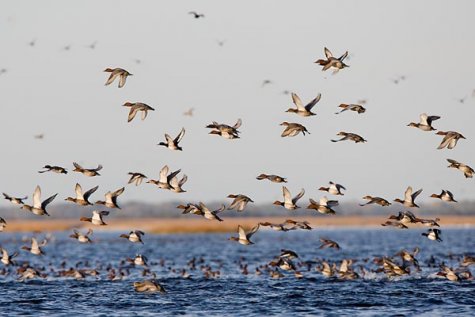What are pochards like?
Photo: Arne Ader
Translation: Liis
Common pochards. Matsalu bay
Common pochard Punapea-vart Aythya ferina
Common pochards nest locally in Estonia and are rather scarce, only around a thousand pairs or slightly more.
We still meet passing migrants in November. Good resting places are the Matsalu bay, Haapsalu Tagalaht, Sutlepa sea, Saunja bay, Väike väin; flocks of migrant pochards can also be seen on inland waters. They are skilled deep-water divers and can stay under water for quite long. Obtaining food from the depths is no problem; they feed on aqueous plants as well as invertebrates.
The Estonian name, punapea-vart, redheaded duck, refers to the male’s exterior. The back plumage and wings are silver grey, with a beautiful rippled pattern. Head and neck are reddish-brown, the breast and tail black. Females leave an impression of uniform greyish-brown, only the sides are a little brighter. Young birds look single-coloured. The weight of adult birds may be up to a kilo.
Of the other pochard species our common nesters are still here – tufted pochards (recognizable from their crest) as well as greater scaups whose males have a similar silver-grey back plumage but metallic green heads.









